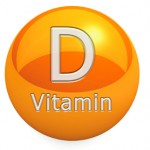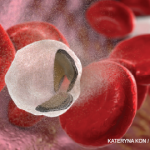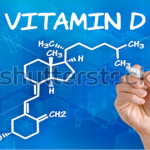Vitamin D Deficiency
In recent years, there has been a great focus on preventing skin cancer. There also has been much media attention on using sunscreen with a minimum sun protection factor (SPF) of 15 to avoid both ultraviolet (UV) A and B radiation. Because they have reduced exposure to this radiation, a key element in the production of vitamin D, many people have become vitamin D deficient.1 Overt vitamin D deficiency is rare; rheumatologists primarily see subclinical vitamin D deficiency and its effect on osteoporosis.
Mechanisms and Clinical Manifestations
In children, vitamin D deficiency manifests as rickets with bowing of the legs. In adults, vitamin D deficiency can present as osteomalacia due to defective skeletal mineralization, which increases the risk of osteopenia, osteoporosis, and hip fractures.2 Often, vitamin D deficiency or insufficiency go undetected. Consensus on the vitamin D “level” considered to be deficient is controversial.2,3
The main role of vitamin D is to regulate calcium homeostasis and optimal skeletal health (increased muscle performance and balance and decreased risk of falls).4 Vitamin D usually refers to vitamin D2 (ergocalciferol) or D3 (cholecalciferol). There are very few foods that contain natural vitamin D. Examples of some vitamin D–containing foods are oily fish (e.g., salmon, mackerel, blue fish, herring, sardines), shiitake mushrooms, and egg yolks. Since very few foods naturally contain vitamin D, many foods are fortified with it. Some examples of fortified food include milk, orange juice, yogurt, butter, margarine, infant formulas, cheeses, and breakfast cereals. Vitamin D obtained from sun exposure, food, and supplements is biologically inert.
In order for vitamin D to be activated and exert its biological effect, it must undergo two hydroxylations. The first hydroxylation takes place in the liver via the hepatic microsomal and/or mitochondrial enzyme vitamin D 25-hydroxylase, converting vitamin D to 25(OH)D (also known as calcidiol). The second hydroxylation (mainly in the kidney) forms the physiologically active 1,25-dihydroxyvitamin D [1,25(OH)2D] (also known as calcitriol).
Development Pipeline
Lodotra 5 mg once daily met the primary endpoint at 12 weeks in the Circadian Administration of Prednisone in Rheumatoid Arthritis-2 (CAPRA-2) trial. Lodotra is a novel single-pulse, delayed-release low-dose prednisone tablet. Lodotra-treated patients showed an ACR-20 response of 49% versus placebo (29%).8
An abuse-resistant form of oxycodone (Remoxy) is undergoing Food and Drug Administration (FDA) review. The manufacturer anticipates FDA approval by mid-2010.9
Risk Factors and Diagnosis
Patients with rheumatoid arthritis, ankylosing spondylitis, and lupus are at an increased risk of developing osteoporosis and fractures.4 Other conditions that can place patients at an increased risk for these bone disorders include adrenal insufficiency, end-stage renal disease, alcoholism, or depression. Certain medications, that, depending on dose, may predispose these patients to fractures include heparin, aromatase inhibitors, tacrolimus, or glucocorticoids (≥5 mg per day of prednisone or equivalent for ≥3 months). When considering osteomalacia or vitamin D deficiency as a diagnosis, a serum 25(OH)D level should be obtained.


